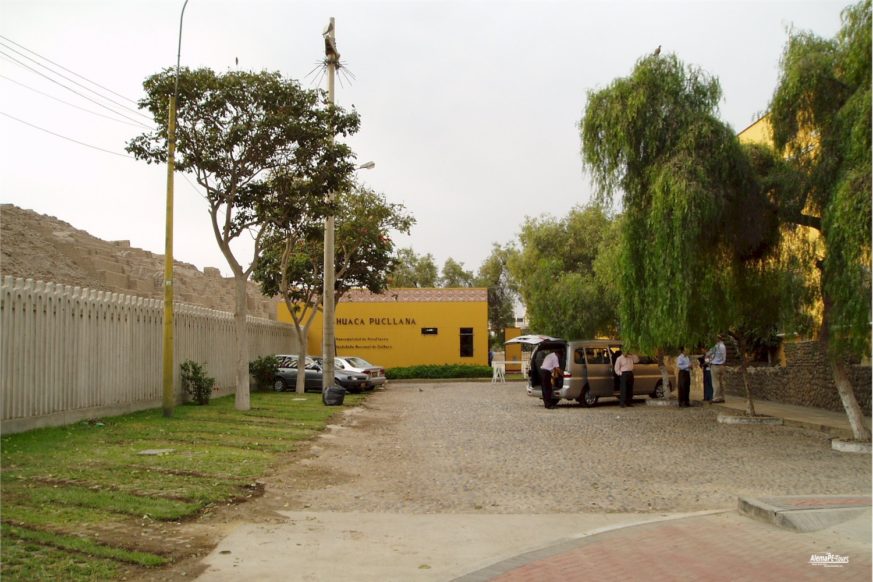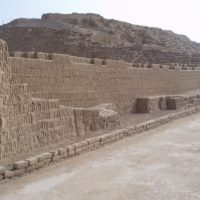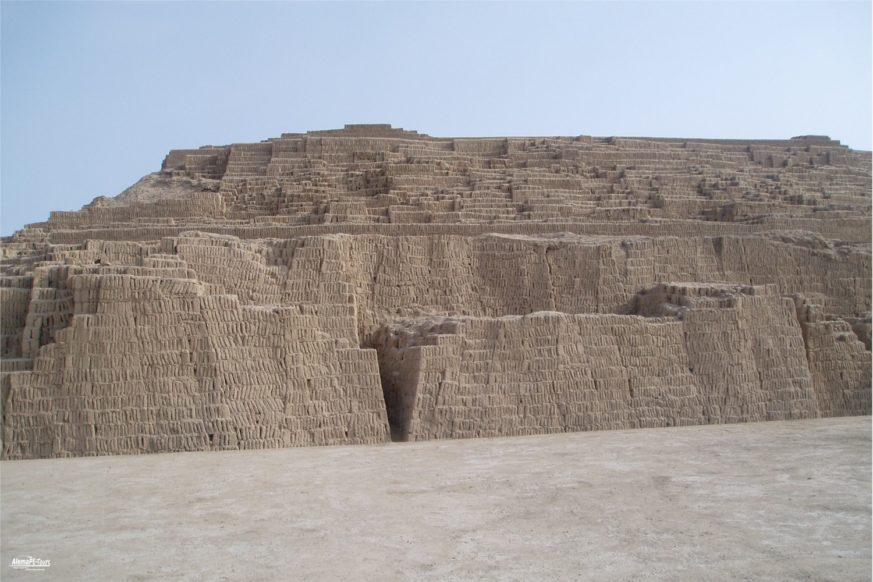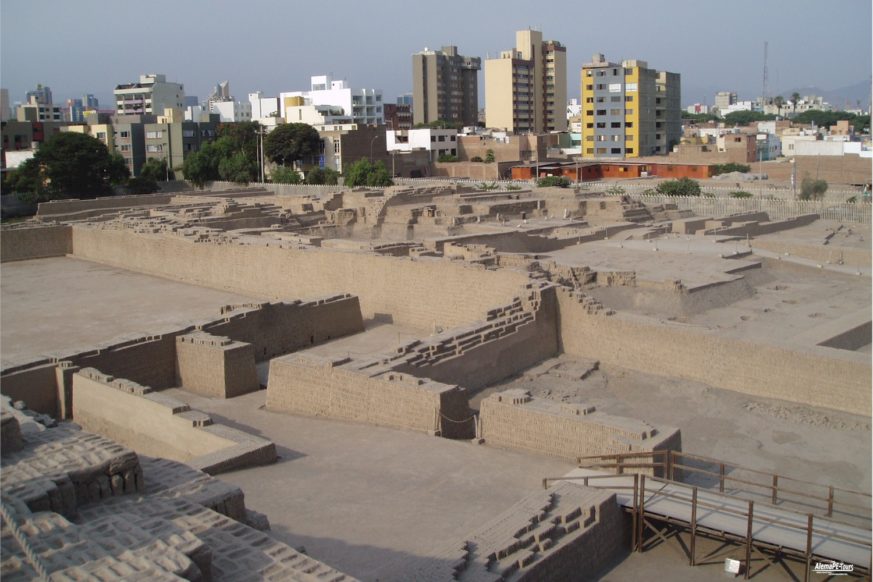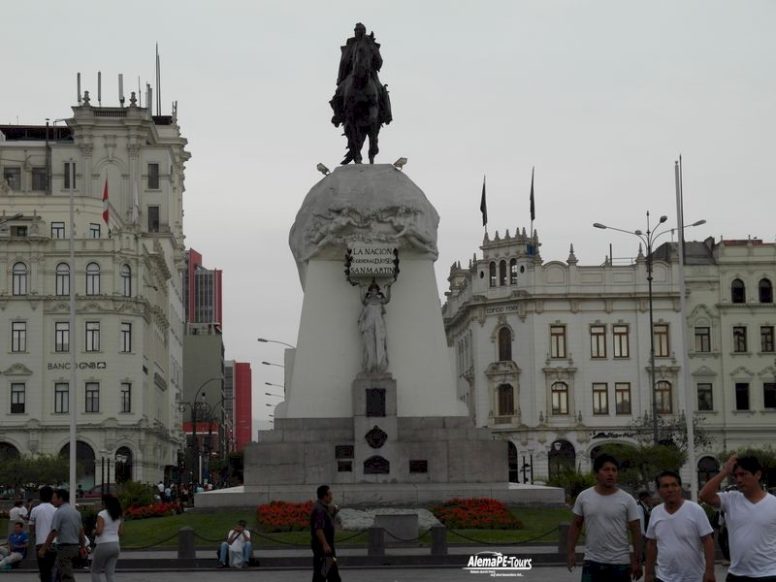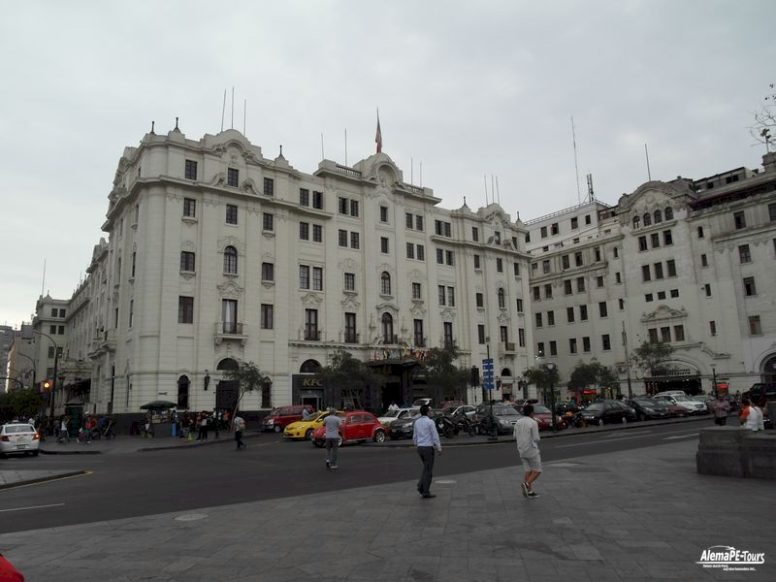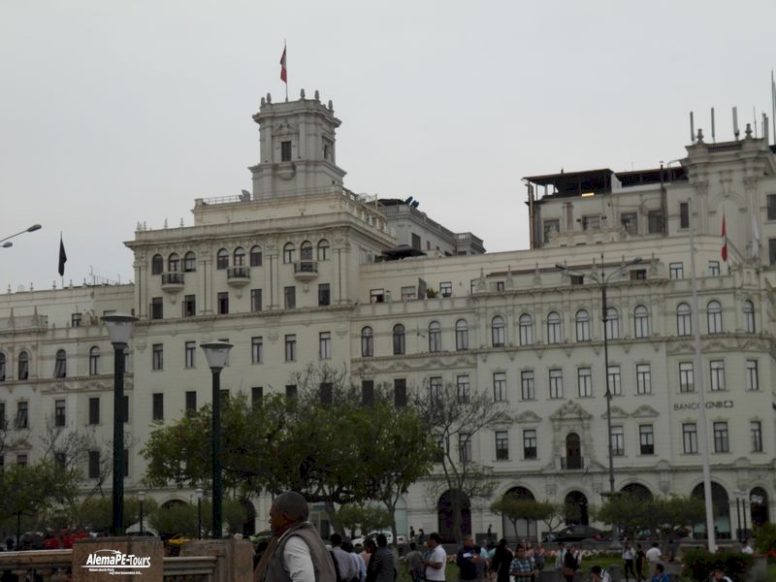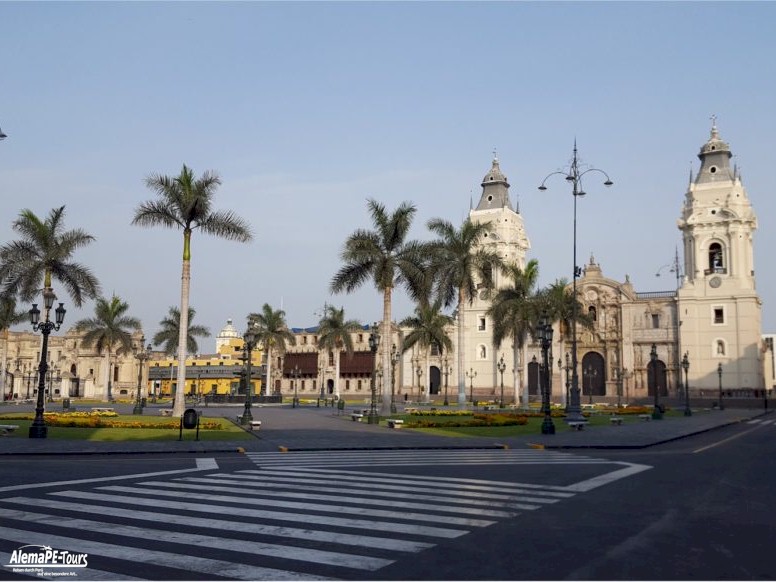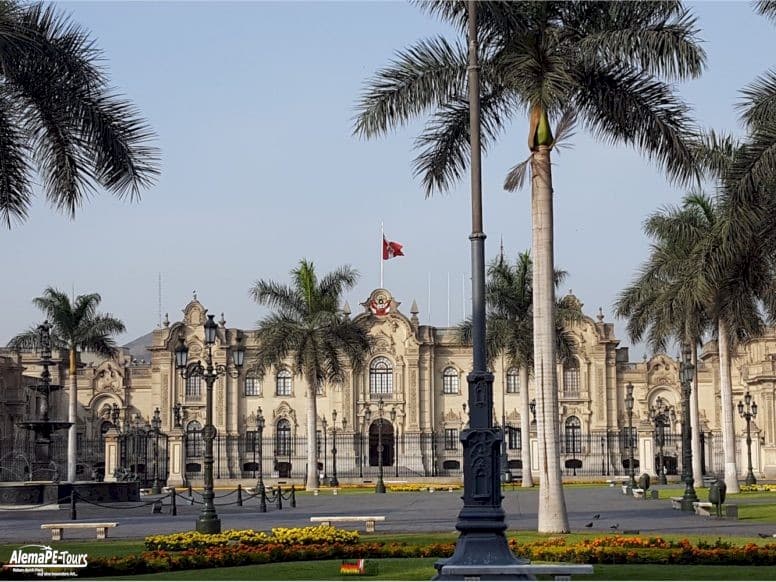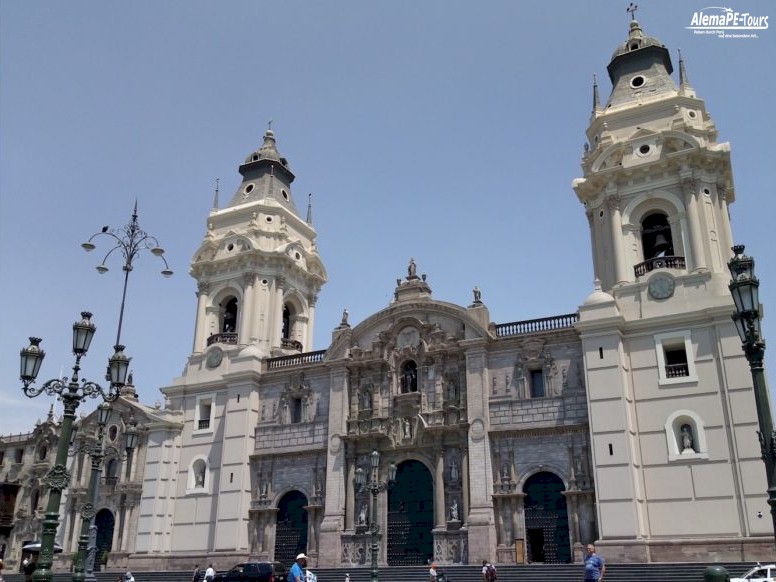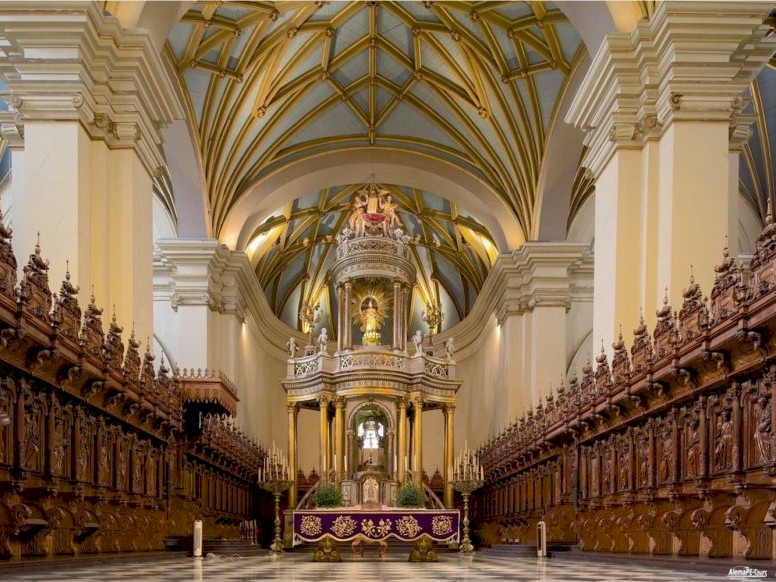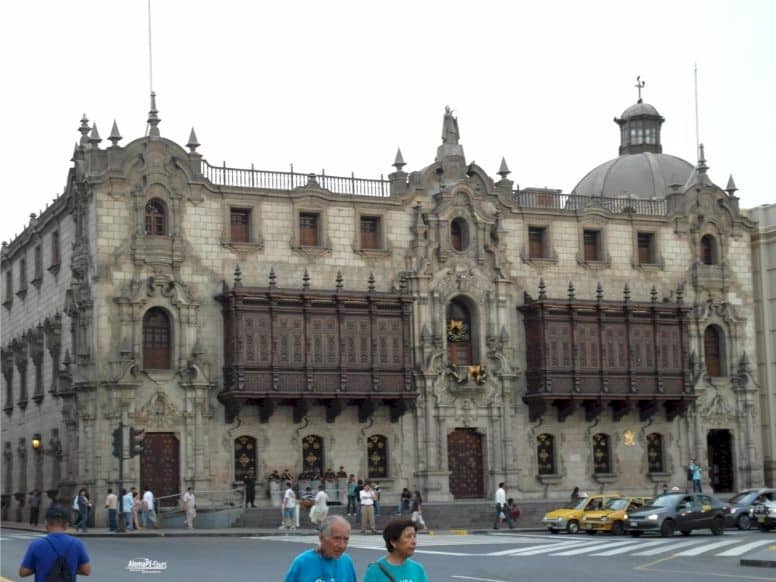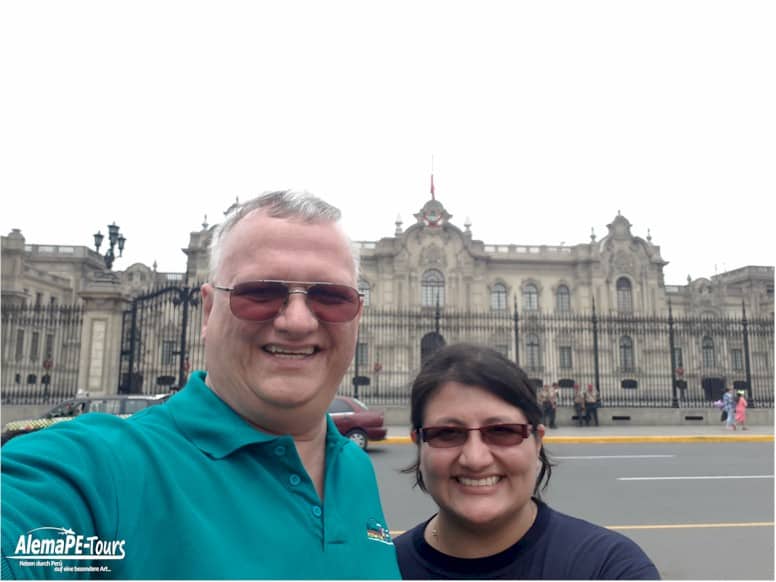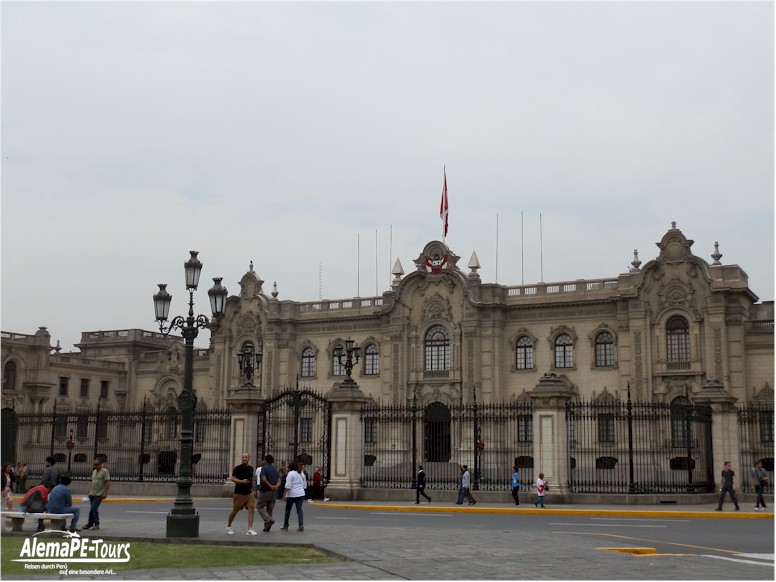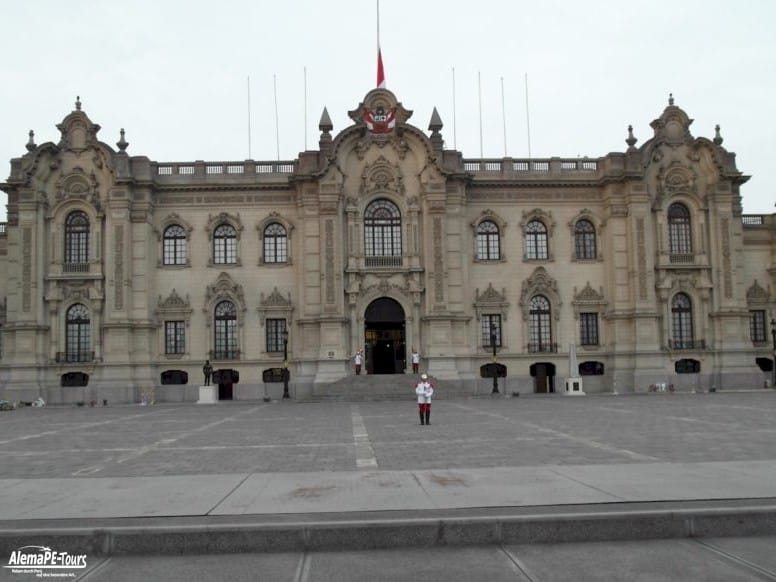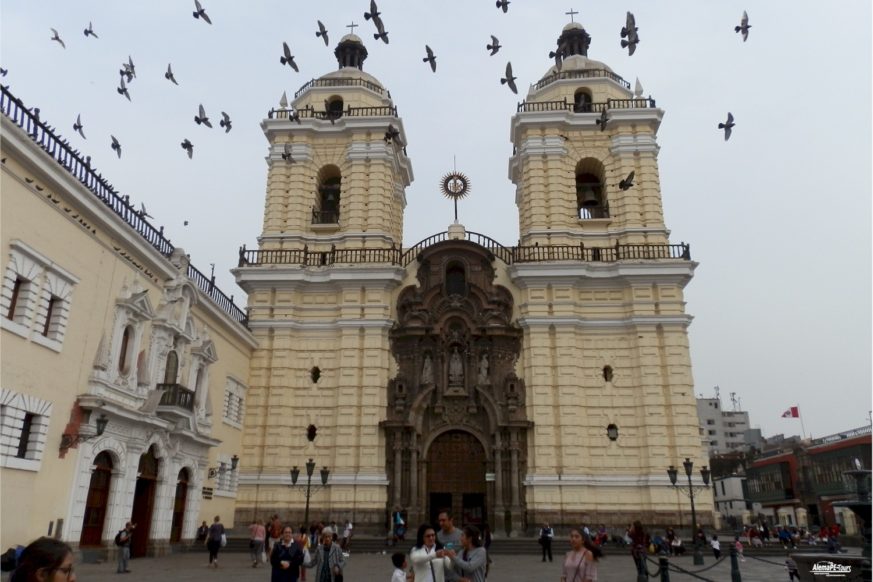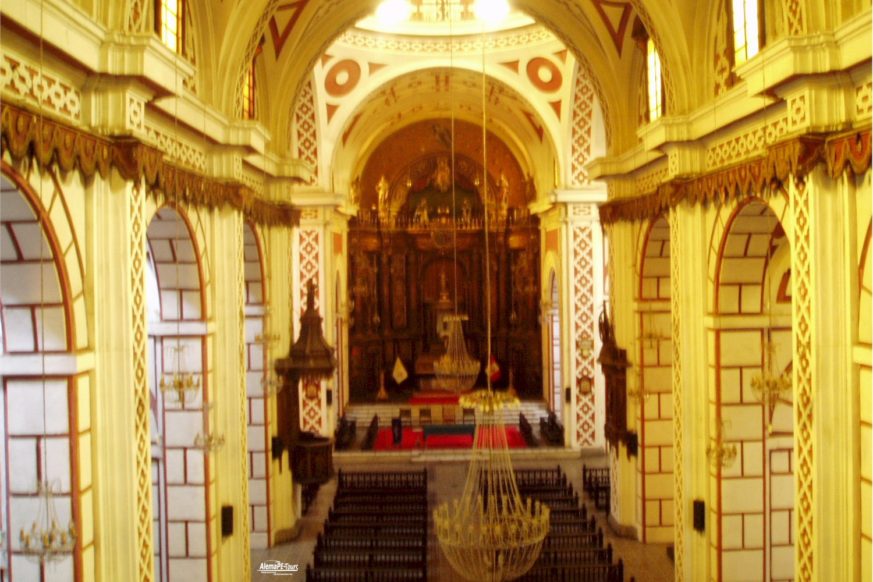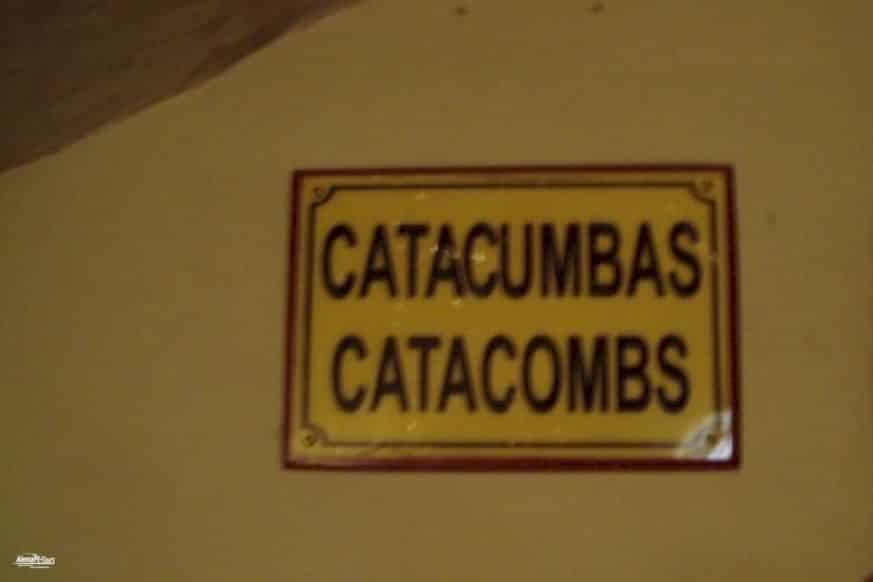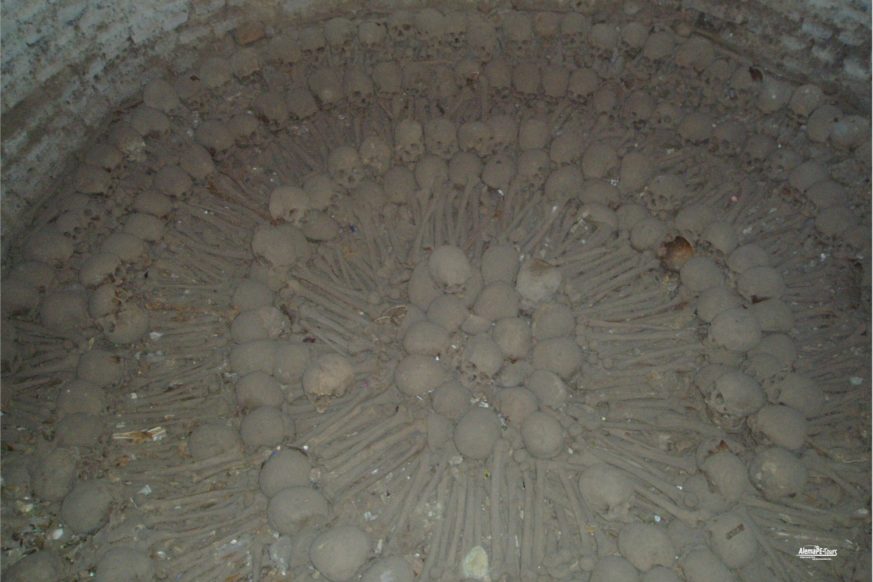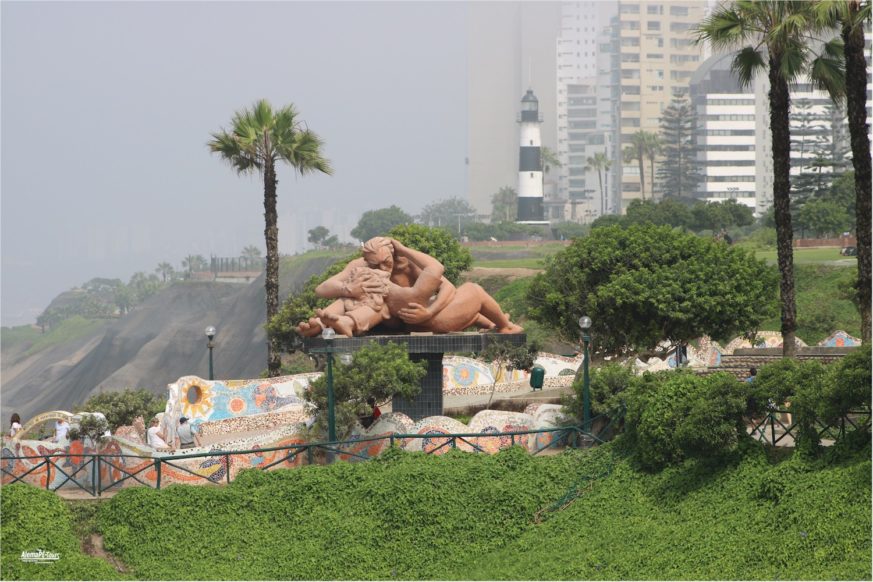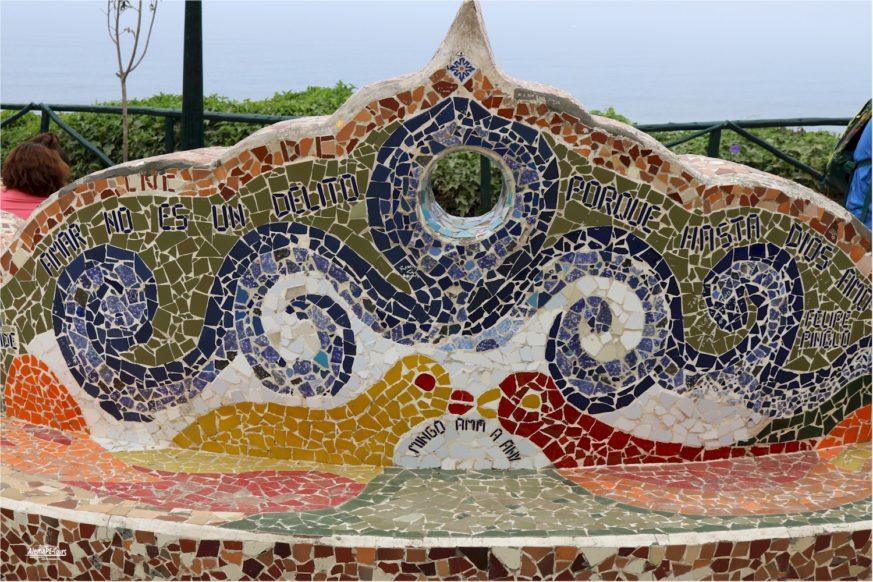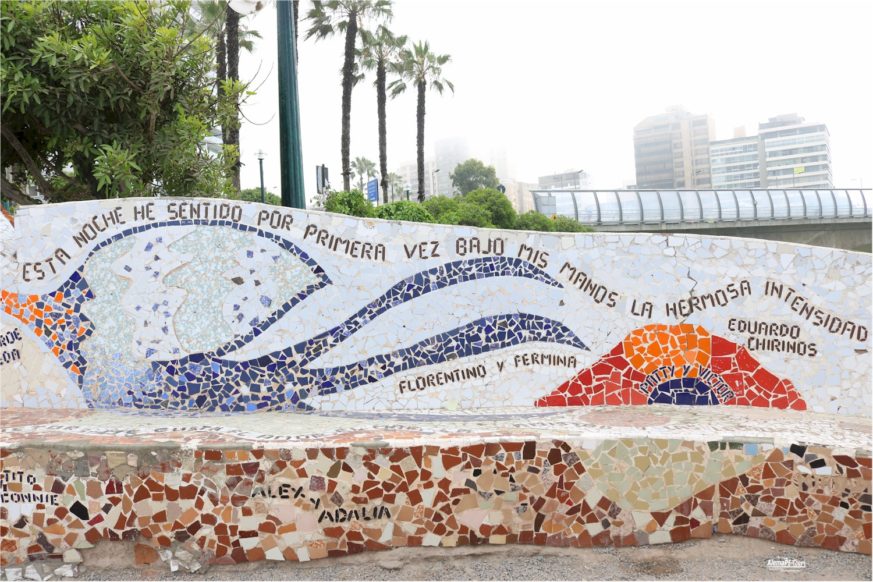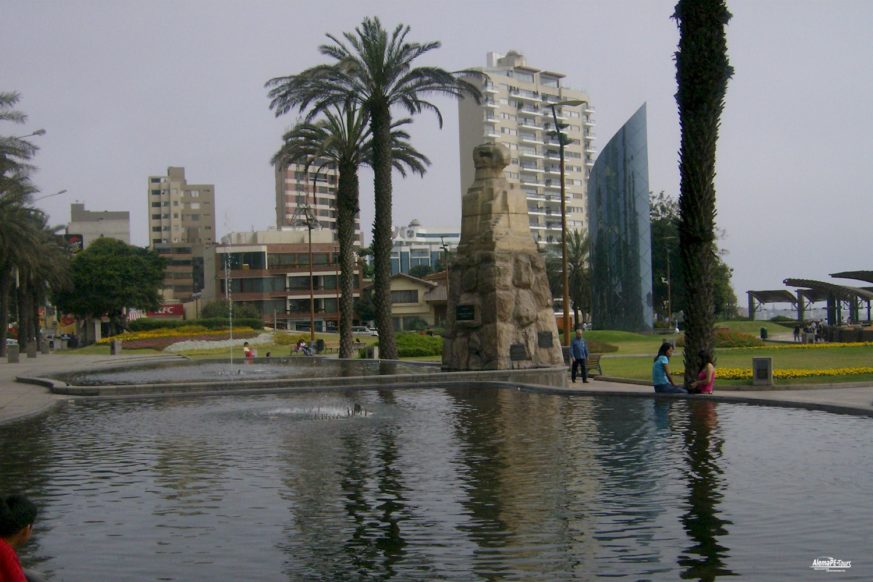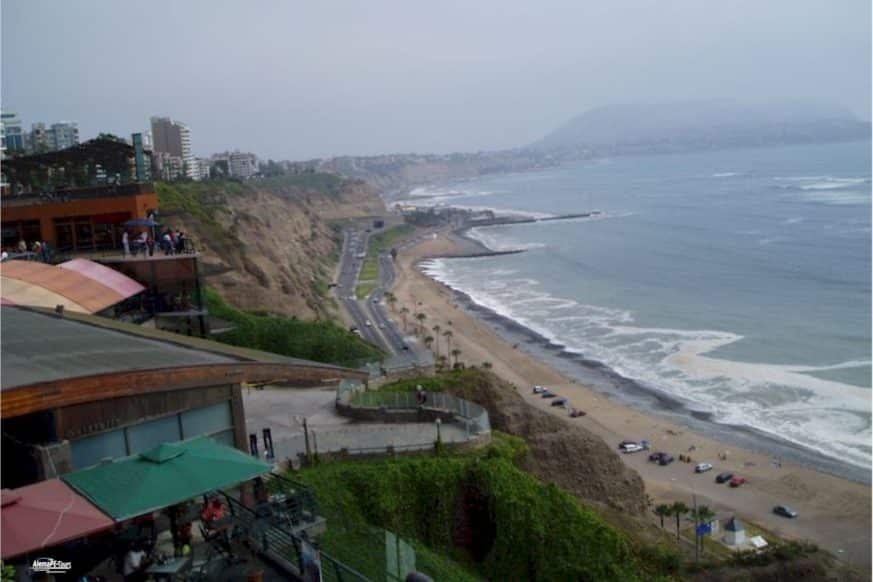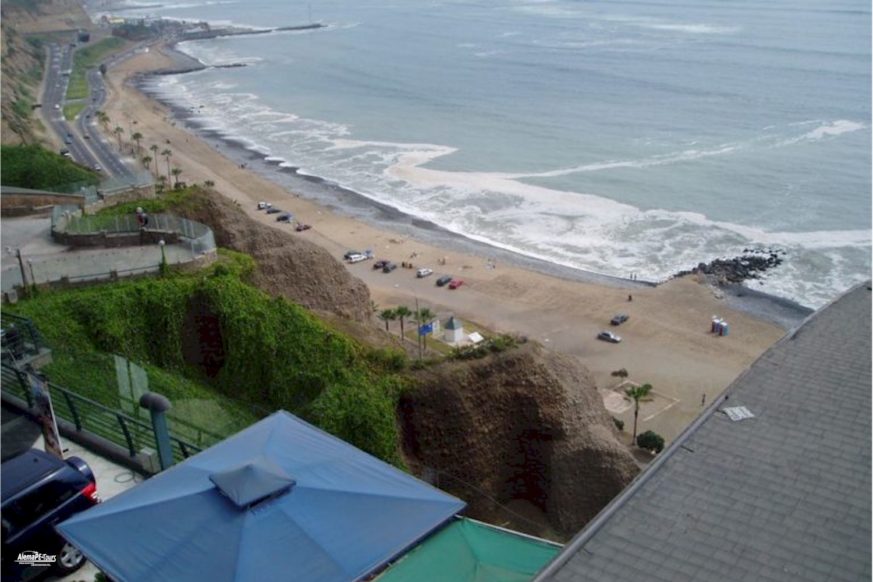LIMA CLASSIC
Lima
Huaca Pucllana • Historic Center • Plaza San Martín • Plaza Mayor • Government Palace • Archbishop’s Palace • Cathedral Basilica • Museum of Central Reserve Bank • Monastery San Fransisco + Catacombs • Miraflores • Larcomar
2 D / 1 N
Huaca Pucclana
An impressive testimony of ancient culture
This pyramid was one of the waypoints of past peruvian culture. Today it is an impressive example of the architectural achievements of this era.
The Huaca Pucllana is an ancient pyramid made from air-dried adobe bricks. The pyramid was built around 500a.Chr. as a significant meeting place for ritual and political activities of the natives. Today it is one of the interesting places in Lima to learn more about the history of Lima. The pyramid consists of clay and mud bricks. The temple is located in an area that is protected and is almost 5 hectares.
Guided tours in Spanish and English are offered. Once you reach the top platform of the structure, you can take in a magnificent view of the buildings of Miraflores. The temple walls offer many motifs for souvenir photos. The not quite arbitrary arranged bricks of the building form interesting patterns and relief-like structures.
Around the temple is a square made with walls and rooms of the same building material. You can enter the chambers, halls and entrances to learn more about the history of the more than 2000 years old facility. Imagine how the Lemen people lived at that time.
The name of the temple comes from the Quechua language of the South American indigenous people and means “player ritual”. In and around Lima there are more ancient temples called Huacas.
Plaza San Martín
Memorial of Lima’s independence fight
After visiting the Plaza Mayor, we will visit another of the most important squares of the city, with its mighty equestrian statue of José de San Martín, the Liberator of Peru, surrounded by some elegant white buildings, such Gran Hotel Bolivar. This square was opened by the spaniards in 1921 on the occasion of the 100th anniversary of the liberation of Peru. The square is just five blocks from the Plaza Mayor.
Plaza San Martín is one of the largest squares in Lima city center, with monuments and imposing buildings. The very lively square is a popular meeting place for artists and musicians as well as political rallies. In 1998 the place was declared a World Heritage Site by UNESCO.
The equestrian statue of Peru’s liberator, José de San Martín, is, like so many monuments in Lima, a very popular photo destination for tourists. The well-known argentine general was one of the important leaders of the rebellion against the spanish conquerors, which eventually led to the liberation and independence of the South American states. The larger than life statue shows the general on the back of his horse. It is supposed to represent the moment when Martín crossed the Andes to allow the independence of Argentina, Chile and Peru.
Around the square are some grandiose buildings, such as the Teatro Colón and the National Club. The Gran Hotel Bolivar was built at the beginning of the 20th century. With its elegant art nouveau light fixtures, sweeping staircases and antique carpets, it is reminiscent of its great era of luxury hotels. In many films of the history of Lima is always shown this magnificent Gran Hotel. The other buildings around the square are mainly built in the art nouveau style and are reminiscent of the golden era of the 20s and 30s.
Here you can also get a very good “catedral”, a double Pisco Sour the size of a pilsner glass. Please take something in advance, as this will surely be a good end to the day.
Plaza Mayor
We visit the birthplace of Lima as part of a city tour. An attractive antique fountain in the center is surrounded by the very majestic cathedral, the Palacio Gobierno (the Government Palace) and several colonial buildings, which today are mostly used by mayor’s offices.
The Plaza Mayor is a very spacious square in the middle of the historical center of Lima, which also houses several of the major attractions of the state capital of Peru. The Government Palace also occupies the entire north side of the square, while the Lima Cathedral is on the eastern side. Due to the importance of these sights, this area is known as the center of Lima (Centro Lima). At the center of the square is a large fountain, which is visited daily by many thousands of tourists. Green areas and trees surround the edges. For car traffic, this place is now closed for some time, only tour buses and small horse-drawn carriages, it is still allowed to make a round around the square. The place is also a popular meeting place for locals and tourists. The history of the city is within reach.
The government palace on the northern edge of the square is from the square by the palm trees and fountains as a foreground is a popular photo opportunity. Guided tours of the palace can be used as a presidential residence and for government meetings, but advance reservations are essential. At lunchtime you can watch the change of guard of the presidential guard from the square.
You can visit the majestic cathedral of Lima dating back to the 16th century and take a guided tour. With its baroque façade and two towers, the cathedral is one of the city’s most significant landmarks. Inside, the very eventful history of Lima is reflected in several paintings. The cathedral also houses the tomb of the notorious spanish conqueror Francisco Pizarro. Next to the cathedral is the Archbishop’s Palace (Palacio del Arzobispado), which is also a striking landmark with its antique wooden balconies. The gothic-style building fascinates with its artfully designed windows and lace towers.
In addition to the many yellow colonial buildings of the Mayor of Lima, which are located around the main square, there are many restaurants and shops in the side streets.
The area is known to locals rather than Plaza de Armas (Square of Arms). It dates back to the early 16th century cathedral. Throughout history, it was used as a marketplace and also as a bullring. Also, there used to be a place of execution with a gallows.
You will find Plaza Mayor in the city center on the south side of Río Rimac. Just one street further on is the disused Estación Desamparados, which today is mainly used for exhibitions. Opposite the street corner is the famous restaurant El Cordano, where many politicians and locals writers.
Cathedral Basilica of Lima
History
The construction of the first magnificent building at this point goes back in history to the year 1535. The spanish conqueror Francisco Pizarro, who subjugated the Inca empire to the spanish crown and founded the city of Lima, is said to have carried the first stone of the cathedral on his own shoulders to this place. About five years later, on march 11th, 1540, the opening and consecration of the then very simple church followed. Since then, numerous renovations, changes and extensions have been made to the facade and the equipment. Thus, the typical colonial facade has remained relatively well preserved until today. The appearance of the imposing structure visible today dates back to the third cathedral from 1746, as the previous church was destroyed by an earthquake in 1609. The first right side chapel houses the remains of Francisco Pizarro. Admission is always possible outside the church services and currently costs 10 soles, including a visit to the religious art museum to the right of the main altar.
The apostles welcome you at the three mighty entrance portals on the main side of the cathedral towards the Plaza de Armas. From the two bell towers between which the peruvian coat of arms emblazon, you can look down on the tiny visitors of the Plaza Mayor.
The access is through the main main portal, which is also called the “Gate of Forgiveness”. The inside of the cathedral shows the beautiful choir stalls and the baroque high altar, which is made of wood carving with ornate gold leaf.
Government Palace of Peru
This imposing building was commissioned in the first part of the 16th century by the spanish conqueror Francisco Pizarro, who is also considered the founder of the city of Lima. When the Spaniards took power, it became the city’s first official palace. The residence now houses the residence of the peruvian president, and this building is also the site of government meetings.
The building is the first official palace in Lima, after the takeover of the rule by the spanish conquerors.
Today it is the official residence of the acting peruvian president.
If you’ve been to lunch near the Plaza Mayor, then you can watch the beautiful changing of the watch to the sounds of El Cóndor Pasa. The palace guard marches in the sting step in their red and blue guard uniforms with gold-colored helmets. They also carry the peruvian flag over the square. The entrance through the large baroque-style portal is on the north side of the Plaza Mayor. If you are interested, you can also pre-register for tours of the palace. The guides are free. But the passport is required.
From the Plaza Mayor, the baroque facade with its palm trees and iron fence in the foreground is a popular photo opportunity. The magnificent rooms in the palace are decorated in a colonial style. Worth seeing are the beautifully maintained outdoor areas with trees and shrubs. In the golden living room of the palace you can expect a very remarkable art collection.
Around 1535 Francisco Pizarro had the building built on the very spot that was used as a spiritual center by the ancient peruvian rulers. In inca times, history was also a great burial place. Historians and locals also dub the building as the Pizarro House. Like many buildings in Lima, the palace has been destroyed, rebuilt and renovated several times in the course of history by fires and earthquakes.
The palace is open to the public, but some parts may be closed off, depending on whether government talks, meetings with other heads of state, meetings or other political activities take place. Reservations can be made by telephone at the press office. Or ask one of the palace guards where the office is to speak to in person.
In 2005, a new lighting was installed in the house of Pizarro. As part of this project, the so-called tourist circuit of light was installed, which was implemented as for other buildings around the Plaza Mayor on the initiative of the then mayor of Lima, Luis Castañeda Lossio for the entire historic city center and the entire place in the evening. and night hours illuminated a whole group of buildings. The city council and Lima cathedral were also included.
In early february 2007, the national emblem was repainted at the top of the front of the main facade of the palace. The national symbol, measuring two by two meters, was created by students from the National Supreme School of Fine Arts in Peru. On May 8th, 2009, Presidential Alan García solemnly placed an obelisk in the main courtyard on the right side of the main entrance on Plaza Mayor, overlooking the Government Palace, which commemorates the victims of terrorism in Peru.
Monastery San Fransisco + Catacombs
In the middle of the historic city of Lima and not far from the Plaza Mayor is the Franciscan monastery of San Francisco from the 17th century and awaits you with its magnificent two churches, its extremely beautiful library and not to forget, with its eerie catacombs.
The Monasterio de San Francisco was built in the Baroque Spanish colonial style of the 17th century in the city center of Lima. The Franciscan monastery, a temple and the two churches of El Milagro (The Miracle) and La Soledad (The Solitude) are located on the site of the extensive complex.
With its impressive library and catacombs filled with countless bones, it offers a spectacular experience. The monastery in the historical center of Lima was declared a UNESCO World Heritage Site in 1991.
The church with its yellow and white facade of the colonial style is a very popular photo opportunity and can be photographed particularly well from the courtyard of the exterior of the monastery. In the catacombs below the church, the last remnants of a creepy past await you, with bones and skulls arranged in geometric patterns. According to historical data, about 75,000 bodies were buried in the catacombs. The visit to the catacombs is not necessarily something for people with weak nerves, the environment and rooms under the monastery complex are accessible via a guided tour and you can expect many bones and sights that can freeze the blood in your veins.
The very famous library of the Franciscan Monastery is a special highlight. The library houses about 25,000 ancient cultural and religious writings. Many of the works date from before the arrival of the Spanish conquerors in South America. One of the most famous works of the library is a Bible from 1571. The main altar of the church is made entirely of wood. The corridors have been decorated in the style of the 17th century with elaborately arranged tiles from Seville. Again and again, restoration work takes place to preserve the monastery complex in its essential core as it presents itself today.
Judas Thaddäus is the patron saint of this church and was one of the twelve apostles. Construction of the church began in 1673 but it was completed in 1774. The church survived the earthquake that had taken place in the previous years up to a very large earthquake in 1970 without much damage. During the earthquake in 1970, a violent quake led to extensive destruction.
Miraflores
This elegant but probably the most expensive district of Lima, with its panoramic views over the pacific ocean and the beautifully landscaped gardens in the district core, its exclusive shops and fine restaurants, is besieged especially by the tourists.
Miraflores among a few other neighborhoods (such as Surco, La Molina and San Isidro), one of the wealthiest and most expensive neighborhoods in Lima. Picturesque gardens, plazas overlooking the ocean and many well-known restaurants and shops make Miraflores an attractive destination for locals and a safe haven for tourists. The many bars and clubs offer a good mix of music, from South American rhythms to the chart hits from the Western Metroplen – here everyone gets their money’s worth. Although Miraflores is located outside of the city center, Miraflores offers numerous attractions and seems more like a separate city than a suburb or suburb of the Lima region. The area is very clean and safe; There is even a police station, which is exclusively concerned with the needs of tourists.
If you prefer quiet, you can relax on the beach below Miraflores. The beaches along the Costa Verde (the green coast) are also a well-known and popular surfers’ paradise from all over the world. Prepare for world championships in surfing. Through the Parque Kennedy you can reach the city center of Miraflores. Here you will find a colorful selection of cafes and shops of all kinds. Since the image of Miraflores has changed through the construction of an underground car park and the introduction of pedestrian zones on the european model, you can now go for a leisurely stroll through the small side streets. The many parks and gardens invite you to linger in the afternoon. At the edge of Kennedy Park you will find the Virgen Milagrosa church, with its attractive architecture and history, and next to it is the county seat.
Another very interesting destination is the Huaca Pucllana. A centuries-old temple complex, elaborately constructed from adobe air-dried mudbricks during the inca period. The extensive temple complex offers an interesting half-day to the archeology enthusiasts, showing you a part of the history of Lima. Guided tours of the temple complex are also available in english. You will learn more about the pre-columbian history that once dominated Lima.
Larcomar
The shopping center overlooking the pacific ocean
The modern shopping center Larcomar above the bypass on the Costa Verde (the green coast) invites you to a shopping tour in one of 160 shops and also leisurely stays with a café or a longdrink. The architecturally innovative building has received several awards. The center was built on a cliff just above the ocean. In recent years, a lot has been put into the renovations of the plant. Enjoy a fascinating combination of panoramic views of the pacific ocean and elegant shops. Or let yourself be pampered in one of the more exclusive restaurants with sea views. The ambiance is rather exclusive and posh for Peruvian standards, and reflects the affluent atmosphere of Miraflores. The shopping center also houses a cinema, a theater, a gallery and an area with a bowling alley and an arcade.
Itineray
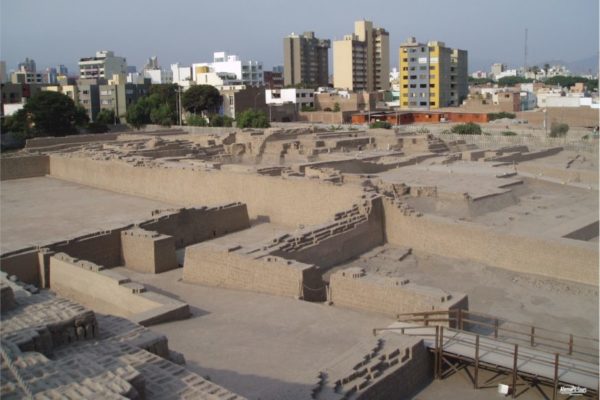
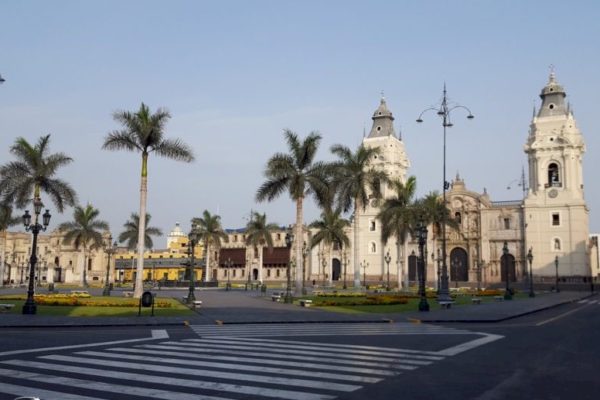
Price
From USD 88.00
Tour-ID
LIM018
Departures
Daily departures at a time we go to arrange with you.
Duration
2 D / 1 N
Included
- Transfer Airport - Hotel - Airport (Private).
- 1 night accommodation + breakfast.
- Excursion mentioned in the program in shared service.
- Tourist income tickets.
- Professional Bilingual Guide (Spanish - English).
- Assistance throughout the trip.
Not included
- Airfaires and taxes of the same ones.
- National and international exit taxes.
- Feeding not mentioned in the program.
- Expenses not specified in the program.
- Personal costs.
- Tips.

